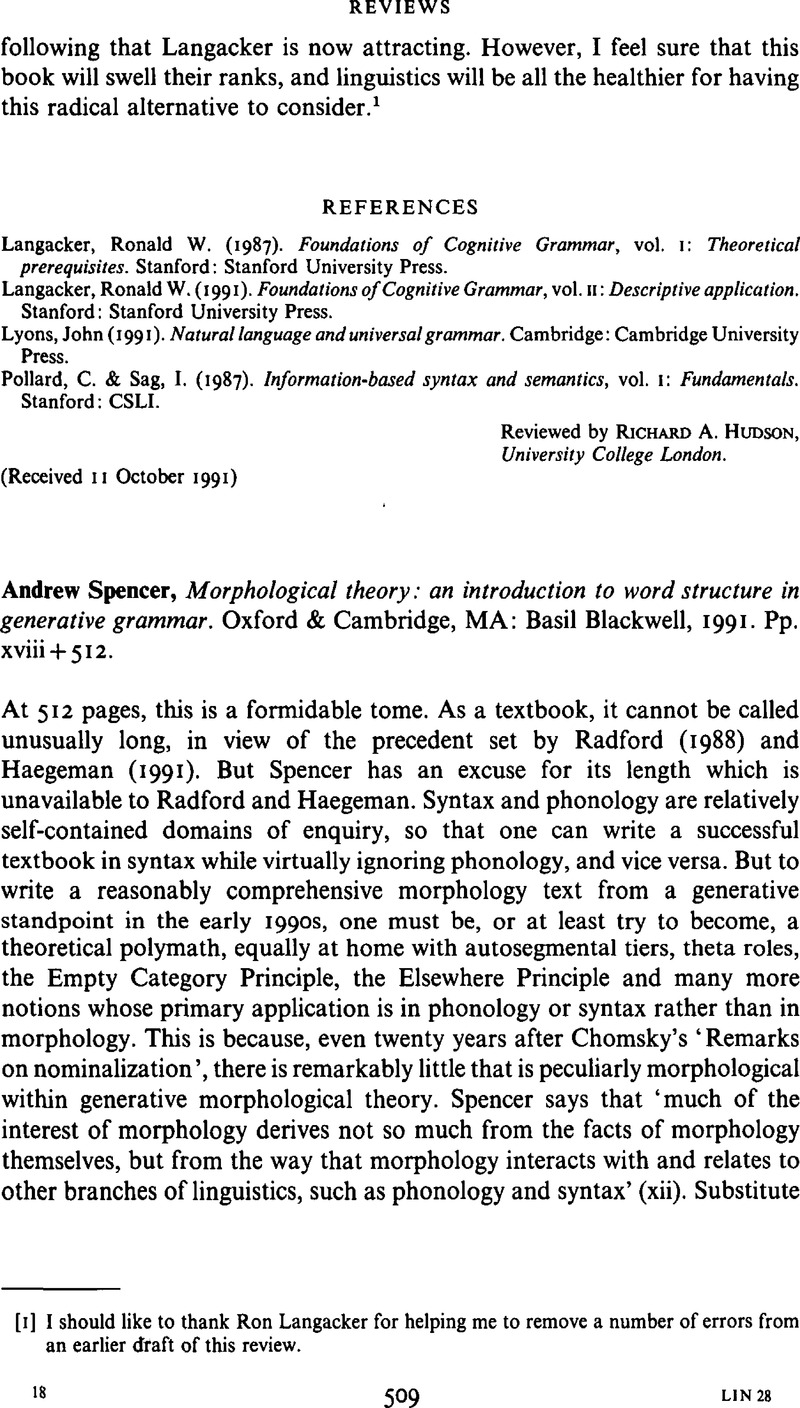No CrossRef data available.
Article contents
Andrew Spencer, Morphological theory: an introduction to word structure in generative grammar. Oxford & Cambridge, MA: Basil Blackwell, 1991. Pp. xviii + 512.
Published online by Cambridge University Press: 28 November 2008
Abstract
An abstract is not available for this content so a preview has been provided. Please use the Get access link above for information on how to access this content.

- Type
- Reviews
- Information
- Copyright
- Copyright © Cambridge University Press 1992
References
REFERENCES
Bybee, J. (1985). Morphology: a study of the relation between meaning and form. Amsterdam: John Benjamins.CrossRefGoogle Scholar
Corbin, D. (1987). Morphologie dérivationnelle et structuration du lexique. Tübingen: Niemeyer.Google Scholar
Haegeman, L. (1991). Introduction to Government and Binding Theory. Oxford: Blackwell.Google Scholar
Jackendoff, R. (1975). Morphological and semantic regularities in the lexicon. Lg 51. 639–671.Google Scholar
Radford, A. (1988). Transformational grammar. Cambridge: Cambridge University Press.CrossRefGoogle Scholar
Ronneberger-Sibold, E. (1980). Sprachverwendung - Sprachsystem: Ökonomie und Wandel. Tübingen: Niemeyer.CrossRefGoogle Scholar
Werner, O. (1987). The aim of morphological change is a good mixture-not a uniform language type. In Ramat, A. G., Carruba, O. & Bernini, G. (eds) Papers from the 7th International Conference on Historical Linguistics.Amsterdam:Benjamins. 591–606.Google Scholar
Zubizarreta, M. L. (1985). The relationship between morphophonology and morphosyntax: the case of Romance causatives. LIn 16. 247–289.Google Scholar


